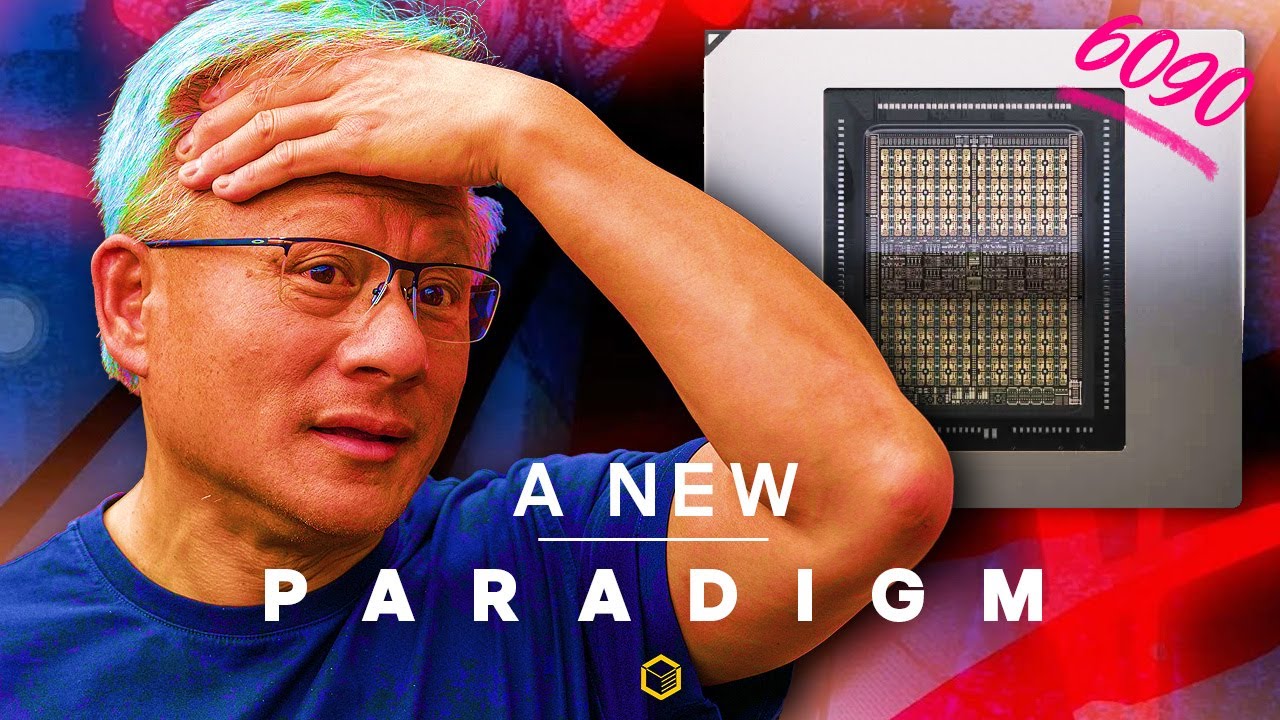The video reveals Nvidia’s new Reuben CPX GPU, a powerful AI-focused chip designed for large context AI workloads that hints at the upcoming RTX 6090, which is expected to feature significant AI and neural rendering advancements alongside modest traditional performance gains. Nvidia aims to revolutionize gaming graphics by integrating real-time neural rendering and AI-driven technologies into its next-generation GPUs, leveraging TSMC’s 2nm process, while facing competitive pressure from AMD’s forthcoming products.
The video discusses Nvidia’s newly announced Reuben CPX GPU, a powerful chip designed primarily for large context AI workloads with up to 30 patterns of FP4 inference. This monolithic die is intended for server rack deployment on the Vera Rubin platform and offers performance approximately 7.5 times faster than the Blackwell GP200 in rack setups. Interestingly, the chip’s topology resembles what could be the upcoming RTX 6090, hinting that Nvidia might integrate these AI-focused advancements into its next-generation gaming GPUs. The CPX chip leverages reduced precision FP4 math to significantly boost throughput while maintaining acceptable accuracy, particularly beneficial for AI image generation and long-format video and game content.
The video highlights a paradigm shift Nvidia is aiming for, moving beyond traditional gaming GPUs like the RTX 5090 to embrace real-time neural rendering powered by AI. This shift is exemplified by technologies like Magika 2 and World Labs’ generative world engine, which can create interactive game worlds from simple images using AI. Nvidia’s goal appears to be bypassing much of the traditional rendering pipeline with fully AI-generated frames, making real-time neural rendering a potential killer feature for future GPUs. The CPX chip and its underlying technology are expected to trickle down to consumer products like the RTX 6090, marking a significant evolution in gaming graphics.
Regarding the RTX 6090, the video speculates on its specifications based on the CPX chip’s design. The 6090 is expected to be built on TSMC’s 2nm process, featuring a massive die size possibly larger than the 5090, making it one of the largest monolithic GPUs ever. It could have 16 graphics processing clusters (GPCs), potentially 192 to 256 streaming multiprocessors (SMs), and a significant increase in tensor cores—from four per SM on the 5090 to possibly six or eight—resulting in a substantial boost in AI compute capability. This configuration could yield a 20% performance increase in traditional rasterization and up to 50% or more in AI and neural rendering tasks.
The video also touches on Nvidia’s manufacturing plans, noting that Taiwanese media reports suggest Nvidia will be the first consumer of TSMC’s A16 2nm process, aligning with AMD’s move to 2nm next year. The 2nm node reportedly uses the same number of EUV layers as previous nodes, potentially making it more affordable and enabling Nvidia to release the 6090 without significant price hikes. However, the video cautions that if AMD’s upcoming GPUs, like the rumored UDNA5, deliver on their promises, AMD might regain a performance lead, reminiscent of the competitive landscape during the 290X era.
In conclusion, the video posits that Nvidia is likely to emphasize exclusive AI features and real-time neural rendering as the next big selling points for the 6000 series gaming GPUs, compensating for relatively modest improvements in traditional rasterization performance. The CPX chip serves as a strong indicator of this direction, and the RTX 6090 could either offer a moderate 20% uplift or a more substantial 51% boost depending on its final configuration. The competitive pressure from AMD appears to be driving Nvidia to innovate aggressively, and the upcoming generation of GPUs is poised to redefine gaming graphics through AI-driven technologies.
